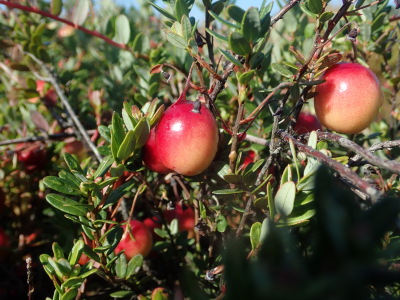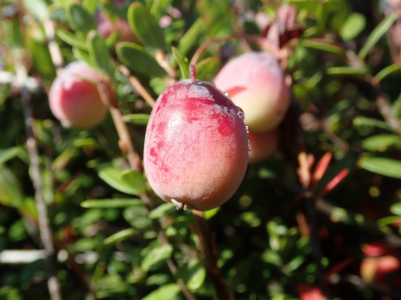
Fresh ripe cranberries add a bright festive touch to holiday meals. Cranberries are also used to make sweetened dried cranberries (SDCs), juices, and other products. Unfortunately, various fungal pathogens can attack cranberries in the field or after harvest and cause the fruit to rot. In fact, crop loss to fruit rot is the number one problem cranberry growers face in the Northeast growing region of the U.S. The problem is increasing in other growing regions, presumably due to changing environmental conditions.
One way to reduce the incidence and negative impacts of cranberry fruit rot is to develop cultivars that can resist pathogen attack. This is a challenging task for two main reasons. First, the fungal pathogens that cause fruit rot are numerous and vary from year to year, bed to bed and region to region. Thus, resistance must be broad spectrum. Second, cranberry is a woody perennial that can require 15-20 years to develop a new variety.
Developing broad spectrum disease resistance will involve a variety of plant traits and the expression of many plant genes that control those traits. One trait the team has explored is the abundance of natural waxes that are present on the surface of cranberry. Our recently published research demonstrated some of the benefits of surface wax (also called epicuticular wax) in cranberry, such as reduced water loss and resistance to sunscald (fruit ‘sunburn’). 
Our latest research suggests that the waxes can also act as a physical barrier to pathogen invasion. In addition, the wax layer is hydrophobic, so water runs off and fungal pathogens have difficulty adhering to the fruit and causing infection. Thus, cranberry fruit with high epicuticular wax is one of the many targets we are pursuing to develop more fruit rot resistant cranberries.
We have developed a genetic marker that can inform us as to whether a cranberry seedling might produce fruit with the desired amount of epicuticular wax. This will allow us to speed up the breeding process since we can select plants in the seedling stage rather than wait 3-5 years for them to produce fruit.
The USDA team performing this research includes Dr. James Polashock (Project Leader), Dr. Joseph Kawash (Bioinformatics), Dr. Lindsay Erndwein (Research Associate), and Kristia Adams (Biological Sciences Technician). Collaboration with Rutgers University Scientists is critical to project success.













